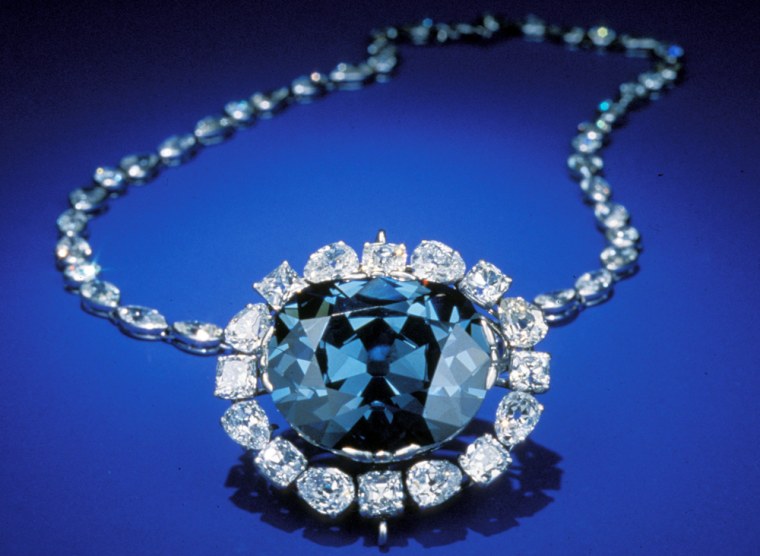The Hope Diamond is going bare to celebrate a half-century at the Smithsonian.
The mysterious blue gem was donated to the National Museum of Natural History more than 50 years ago and the museum is celebrating by having a new setting designed.
Starting in September, the 45.52 carat diamond will be exhibited as a stand-alone gem with no setting.
New York jeweler Harry Winston donated the fabled diamond to the museum and his firm is designing three possible new settings.
Starting Wednesday the public is being invited to vote online for their favorite, at http://www.smithsonianchannel.com/hope.
The winning setting will be announced this fall and the gem will be shown in the setting starting in May, to mark the premiere of a Smithsonian Channel documentary on the diamond.
The Hope has been removed from its setting for cleaning from time to time, but this is the first time it will be on public view by itself.
Previously it has been shown in a platinum setting, surrounded by 16 white pear-shaped and cushion-cut diamonds, suspended from a chain containing forty-five diamonds. The Hope will return to this original setting in late 2010.
"This is a rare and exciting opportunity for people to see the Hope Diamond as it has never been seen before," said museum director Cristian Samper.
Formed more that a billion years ago, the diamond was mined in India and later is believed to have been part of the French crown jewels, having been stolen during the French Revolution. It later came into the possession of Henry Philip Hope, whose name it carries.
The Hope Diamond was long thought to have a curse, bringing bad luck to its owners, but Smithsonian officials say it has been kind to them, drawing throngs of visitors.
